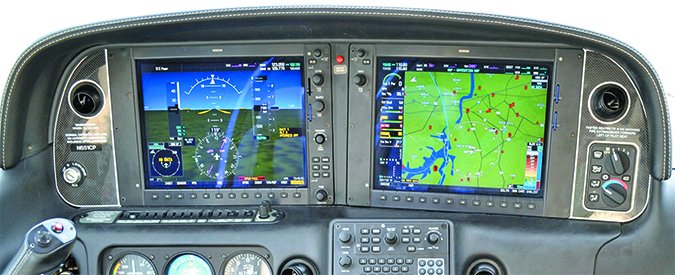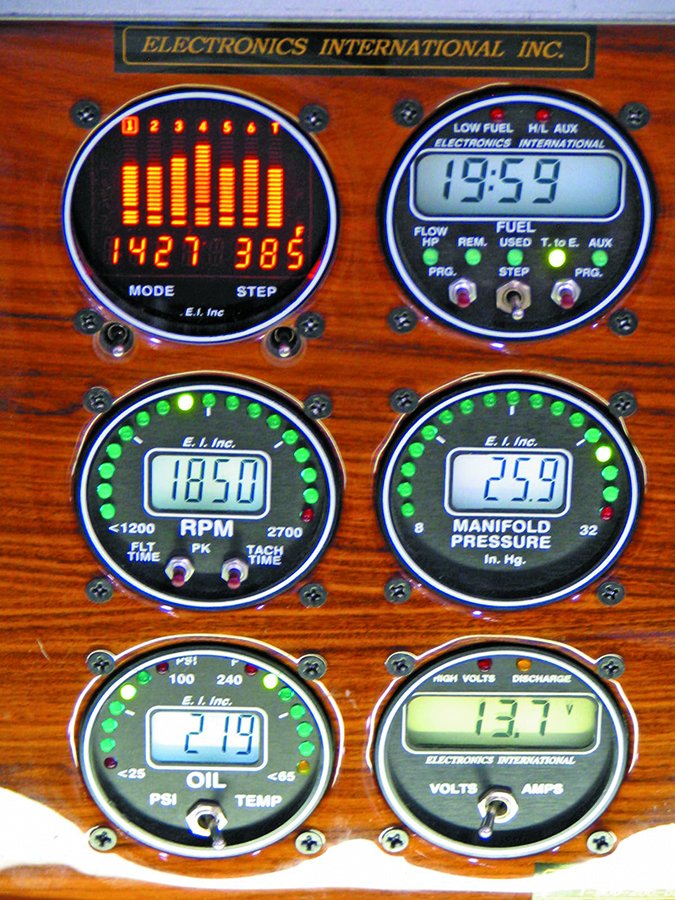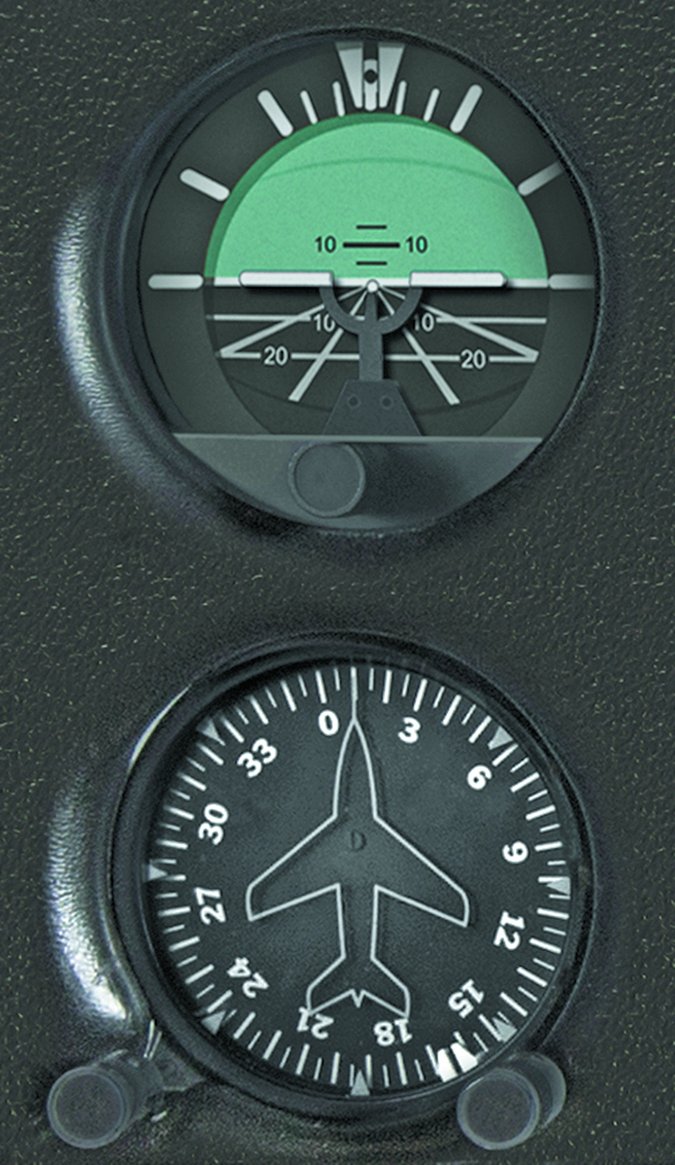Instruments have been a part of aviation since the first flights by the Wright Flyer equipped with a stopwatch, an anemometer to measure wind speed and a “Veedor” to measure engine revolutions. With the increase of flight activity in the early years of aviation, aircraft instruments were invented that provided necessary information to pilots for precise control and navigation of their aircraft.
In your role as a pilot—and especially if you’re an aircraft owner—it’s important to understand not only how aircraft instruments work but also be knowledgeable of the systems that they interface with. The maintenance and care of an aircraft, its systems and required inspections are a task for which the aircraft owner is responsible. And it is not an easy one.

The Basics
All modern aircraft, whether equipped with traditional steam gauges, the latest in flat-panel glass displays or some combination, share the same basic pitot and static systems discussed in the December 2016 article “Pitot-Static System Failures.” These systems deliver a very slight pressure to the instruments they serve and instrument accuracy is impacted by even minor variations such as leaks, disturbed air or even partial blockage in the lines directed to instruments such as altimeter, airspeed and vertical speed.
Other systems are electrical or mechanical and are self energizing. These include the tachometer, oil pressure and oil temperature gauges. While more modern aircraft have electrically powered instrumentation or a digital display, the majority of general aviation aircraft still retain the self-powered instruments as a matter of reliability and economics. In the case of a total electrical failure, it’s important to know which instruments you can rely on to provide accurate information. For example, fuel quantity gauges on most aircraft require electrical power and are not reliable with the electrical system shutdown.
Many airplanes regularly flown IFR use vacuum to power gyroscopic instruments. These include the artificial horizon/attitude indicator and the heading indicator or directional gyro. When a vacuum pump fails, do you know what instruments it takes with it? Will your autopilot work? Will a failure of one vacuum instrument cause other vacuum instruments to fail? How about the old turn-and-bank or modern turn coordinator—how are they powered?
Turn coordinators are electrically powered, and the most important aspect of any gyroscopic instrument, vacuum or electric, may not be immediately obvious unless the pilot happens to notice a low reading on the vacuum system gauge or the aircraft is equipped with a warning lamp or flag. Properly functioning gyroscopic instruments take time to decelerate and become inaccurate or unreliable over a minute or two, not seconds. This inaccuracy and sluggish operation over time can cause a pilot to lose control of the aircraft by following a slowly dying gyro into the ground.
How They Operate (And Fail)
Steam gauge aircraft instruments can be grouped according to the systems that they operate from. Pressure flight instruments operate from the static and pitot system, and they are self-powered with extremely sensitive diaphragms relying only on variations in pressure to operate. These pressure variations are transmitted mechanically by gears and a jeweled movement as a result of the extension and retractions of the diaphragm. As with anything mechanical, age takes its toll on the accuracy of instruments such as the airspeed, altimeter and vertical speed indicator.
These instruments are affected by moisture as well as dust/dirt and should be kept clean by ensuring that the static system is intact and that inoperative instruments are removed and replaced or promptly repaired. Cloudy or dusty-looking instruments may mean the system is contaminated, that the static system must be purged of moisture or dust, and that all the instruments in the system repaired or replaced. Also significant is the fact that leakage sometimes occurs between instrument glass and outer case as well as system fittings. This occurs because sealants become inflexible over time and have lost their ability to keep the system closed.
Leakage must not be tolerated, as the accuracy of all the instruments in that system is compromised. One good clue that your static system has a leak and requires maintenance is to watch your instruments when you open and close an air vent and the altitude, vertical speed or airspeed changes abruptly.
Vacuum-operated gyroscopic instruments over the years have been very reliable with very few actual failures of the instrument itself; not so the vacuum system itself. Vacuum system failures can be prevented with proper maintenance and by replacing the pump at intervals recommended by the manufacturer. Installing a standby vacuum system or electric backup instruments can be a lifesaver.
Electrically powered instruments can be of several different configurations. These can include a simple fuel quantity sender, or flap position sender (variable resistor) and indicator, to an electric tachometer powered by a small generator instead of the more common flexible mechanical cable between the engine and the gauge in the instrument panel. Anything electrical, however, is subject to the effects of vibration, corrosion and broken (open) connections—remember this in your troubleshooting routine. Electrical components do wear out or deteriorate over time and malfunction, even if the item is rarely used. Good preventive maintenance practices such as keeping moisture off connections, proper routing and attachment of wiring, plus reducing vibration, can go a long way in avoiding premature instrument and electrical failures.

Electrical Failures Can Mask Your Aircraft’s True Condition
Meanwhile, consider a total electrical failure in a modern general aviation aircraft. A few years ago, a pilot with whom I was acquainted became involved in an aircraft accident because he overreacted to an alternator failure on a nice Saturday afternoon pleasure flight. During this flight, he happened to notice his fuel gauges were indicating empty.
Not taking time to check the ammeter to find out exactly what was wrong, he made a hasty decision to land immediately at a nearby airport with a relatively short runway. He ended up running off the runway end, damaging the aircraft.
The mishap resulted, in part, from the poor selection of a suitable airport. The failure prevented the pilot from deploying the electric wing flaps, which meant landing longer and faster than normal.
There’s nothing wrong with declaring an emergency (if able) and asking for assistance, or performing a precautionary landing. But first survey the situation based on your (hopefully detailed) understanding of the affected systems. That’s the only way you can make correct decisions.

Vacuum/Pressure Instruments
Vacuum instruments are mechanical devices that operate with a gyro spinning at high speed, powered by jets of vacuum or pressure impacting on small cups machined into the gyro rotor. The precision-balanced rotor is suspended by a shaft and supported by tiny bearings lubricated when the instrument is assembled. There is no provision for bearing lubrication other than when the unit is disassembled during maintenance or repair.
An often-overlooked procedure is to check the vacuum or pressure gauge reading in your aircraft against a calibrated gauge. This ensures that the actual vacuum/pressure is set correctly, since over- or under-pressure operation compromises accuracy, increases wear and the opportunity for failure of the vacuum pump, instruments or the entire system.
Replacing instrument air filters on an annual basis and checking for leaks in the system will ensure a long service life of both the pump and associated instruments. When replacing a vacuum pump due to a failure, ensure that all hoses, filters and fittings are checked for contamination from foreign material. Not only is the newly installed pump at risk for failure, the instruments may also fail due to foreign-material contamination. Gyros rarely fail without some type of warning, which may be indicated by excessive drift or precession, or noisy or erratic operation. Inactivity really takes its toll on these instruments as the lubrication that is on the tiny bearings tends to drip or wick away from the actual bearing surfaces while resting for long periods of time.
Performance Considerations
Correctly measuring aircraft performance requires instruments providing accurate information to the pilot. The performance listed for your aircraft was obtained when it was new and rigged properly, loaded to the most favorable center of gravity location and flown by a test pilot under optimum conditions. The test pilot also had accurate instrumentation, probably better than what’s in the airplane’s panel now.
While digital instruments are slowly replacing analog gauges, much of the instrumentation we fly with still relies on precise pressure delivered to the computer, instrument or other device to indicate airspeed, altitude or vertical speed. Therefore, the accuracy of the information on the instrument panel depends on precise measurement of that pressure. Otherwise, the 78 KIAS you are using to get best rate of climb may not be exactly 78 knots, and your rate of climb may not be the best.
How about that simple mechanical tachometer? Mechanical tachometers have a history of being inaccurate, especially when considering age of the instrument and inactivity over the years. Inaccurate readings from just these two instruments (airspeed and tachometer) can have a very definite impact on performance and overall safety as the aircraft will not achieve published performance numbers. Most, if not all, aircraft maintenance shops have tachometer-checking equipment that should be used to indicate actual rpm. A calibrated tachometer should be used to compare required static rpm listed on type certificate data sheets to the specified minimum or maximum full throttle rpm. An inaccurate tachometer can easily differ from the published requirements by 100 rpm or more.

Electronic Instruments
Electronic instruments are popular, and many new aircraft are delivered with all-electronic panels. Older aircraft are being retrofitted to replace their steam gauges with the modern, electronic versions. A major milestone along this path was development of the attitude and heading reference system (AHARS) that replaces mechanical gyroscopic instruments. The AHARS is a small, lightweight, solid-state device that uses tiny sensors to determine acceleration. This data is analyzed continuously and presented on the glass-panel display.
The AHARS’s sensors measure acceleration in all axes and a remote flux sensor that measures the earth’s magnetic field. A computer chip calculates and delivers an accurate compass heading in any flight regime. While electronic instrumentation has proven to be extremely reliable, repairs can be more costly than repairs to individual analog instruments.
On the other hand, repairs to mechanical instruments may become more expensive—or impossible to obtain—as fewer and fewer shops maintain the expertise, tools and test gear required to repair them.
A Lot of Knowledge
Knowledge of how a system operates (whether digital or analog) and the proper operational procedures can go a long way toward ease of operation and a smooth transition from analog to digital instrumentation. Communicating with an instrument repair shop or manufacturer for the proper troubleshooting techniques can be very beneficial to identifying the problem, saving time and money.
Properly maintaining aircraft instruments and associated systems, and seeking repairs or replacement at the first sign of any deficiency, can be critical to safe operations. Always include the pitot/static system on every preflight and be especially careful when checking the integrity of the system after any maintenance or repair action—mistakes do occur. Operating an aircraft with a faulty or inoperative instrument can have serious consequences. Maintenance personnel conducting an annual or 100-hour inspection should not return an aircraft to service and pilots should not conduct flights with inoperative instrumentation required by FAR 91.205.
Mike Berry is a 17,000-hour airline transport pilot, is type rated in the B727 and B757, and holds an A&P ticket with inspection authorization.




